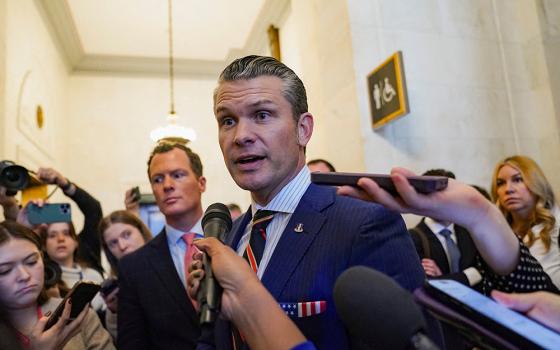So how are we doing in efforts to combat poverty in America?
One perspective can be gained by looking back.
It was 50 years ago our nation first seriously began to tackle the issue. That was after Michael Harrington, the socialist and former Catholic Work, published The Other America, a book that revealed to us that a full 25 percent of Americans were living in poverty. Harrington had attended Holy Cross, had been influenced by the Jesuits, and had experienced poverty first hand, beginning in 1951 serving as a Catholic Worker among the homeless in New York’s Bowery district.
Harrington’s book, which eventually sold over a million copies, came to the attention of then President John F. Kennedy and later, according to some reports, played a role in moving President Lyndon Johnson to declare his “War on Poverty. In the years that followed our nation witnessed the introduction of unprecedented federal and state anti-poverty programs, including Medicaid, Medicare, food stamps and expanded social security benefits. Arguable all these are traceable to Harrington’s conscious altering book, listed in 1998 by Time magazine as one of the 20th century’s most influential books.
Fast forward five decades:
Medicare in 2010 was providing health insurance to 48 million Americans - 40 million of these people age 65 and older; an additional eight million younger people with disabilities.
Medicaid had become the largest funding source for medical and health-related services for people living at and below U.S. poverty levels.
Food stamps in 2012 were assisting 46.4 million Americans by an average $133 per month.
Today, the percentage of Americans living in poverty has been reduced to 15 percent from the 25 percent in the 1960s. (The official poverty line for a family of three—one parent with two children—is $17,568.)
While 15 percent is an improvement, such a poverty level in America continues to be a disgrace.
The 15 percent figure, meanwhile, doesn’t tell the whole story. Up to 43 percent of Americans currently live in what is called “liquid asset poverty,” meaning they live on the edge of poverty and could fall into poverty within three months were they to lose their jobs. These are hardly reassuring numbers.
So if the bad news is we tolerate far too much poverty and have not found the will to eliminate it altogether, the good news is government programs, cavalierly on the cutting blocks by many conservative politicians, have made serious inroads into cutting back poverty in America.
Were in not for Medicare, Medicaid and food stamps programs U.S. poverty numbers would be much higher than they are today – and possibly higher than they were 50 years back.
Who has benefited most from these programs? Our elderly and our children have.
Consider this. Nearly half of all American children receive food stamp benefits at some point before they reach the age of 20. Among African-Americans the figure is much higher: 90 percent! One in seven Americans is currently enrolled in the food stamp program. This number has nearly doubled, to 18 million, from pre-2009 recession figures.
Bread for the World, the food lobbying organization states the moral case clearly: “We live in the world's wealthiest nation. Yet 14.5 percent of U.S. households—nearly 49 million Americans, including 16.2 million children—struggle to put food on the table.
“In the United States, hunger is not caused by a scarcity of food, but rather the continued prevalence of poverty. Both issues must be addressed in our continued efforts to help those Jesus called "the least of these" (Matthew 25:45).”
I wonder if the issue of poverty makes it into the presidential debate this week?




